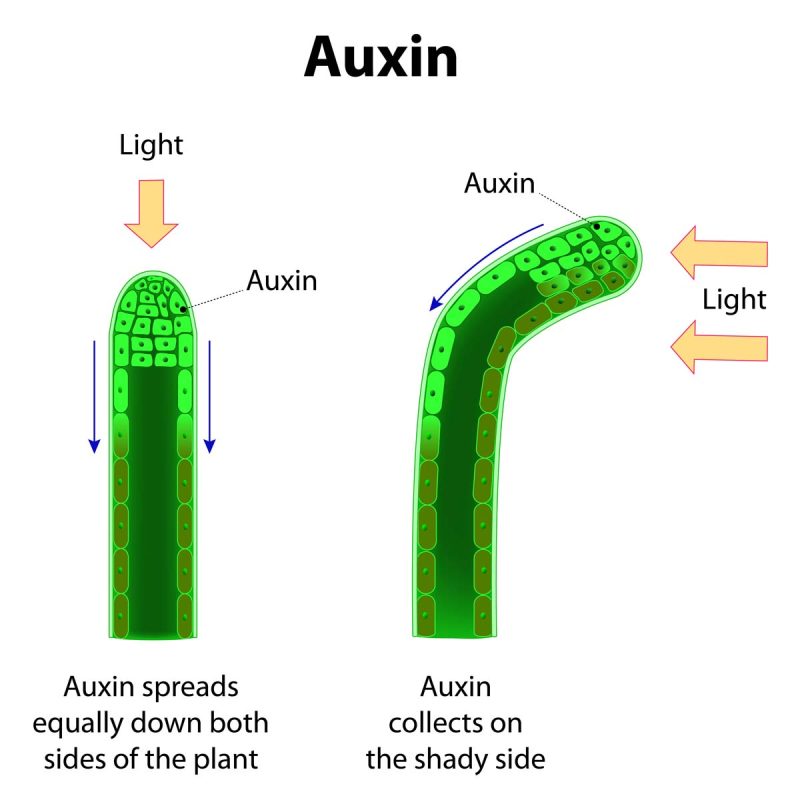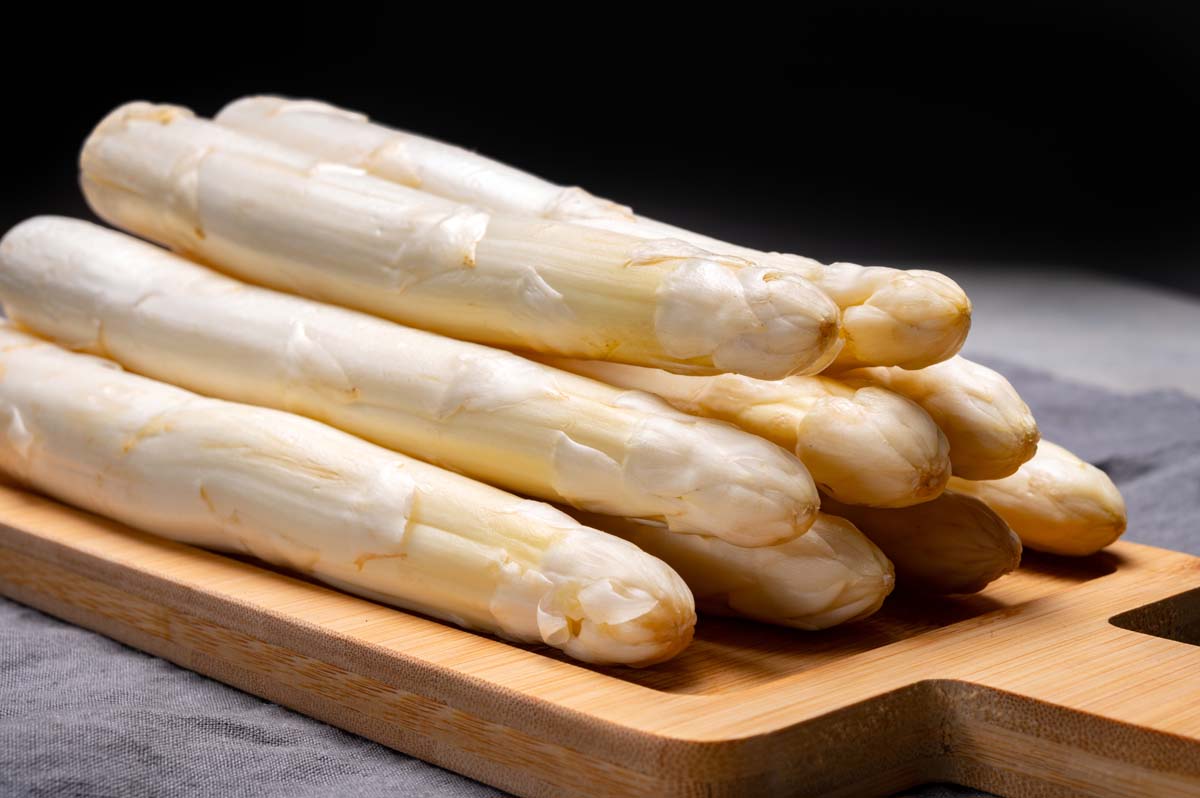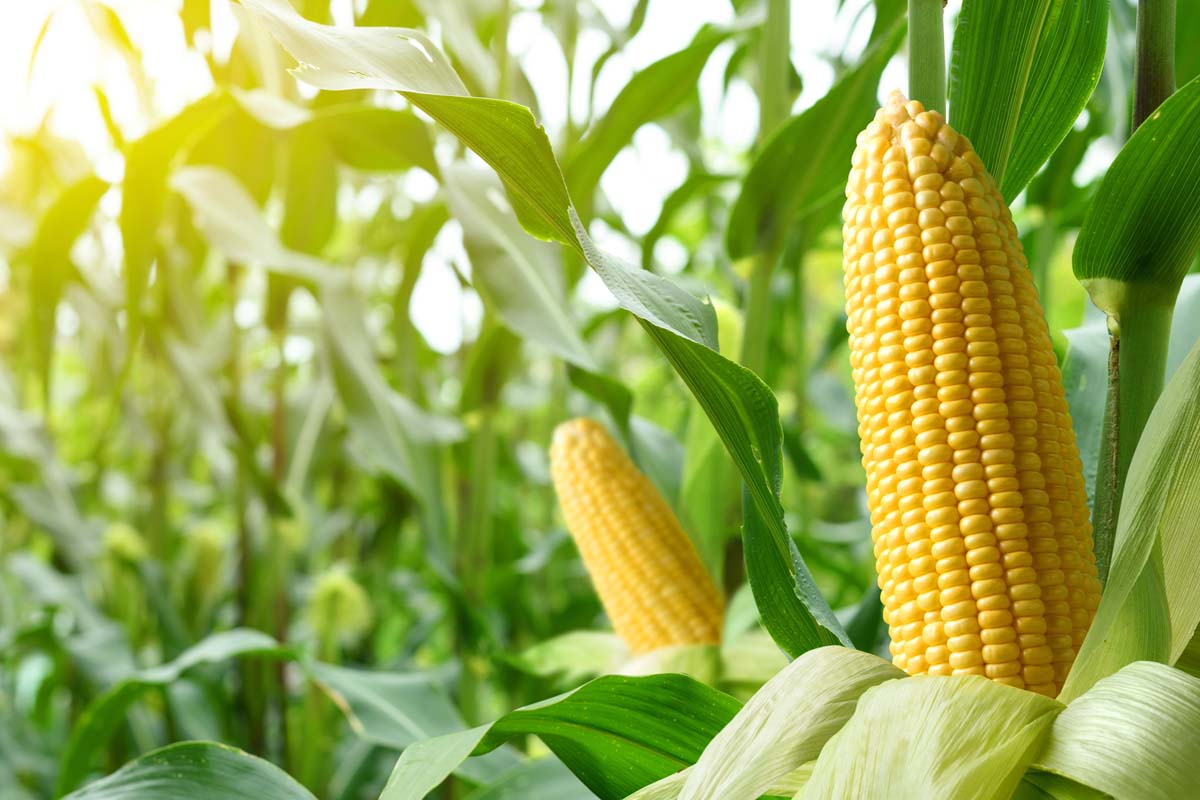What is etiolation? Ι When is etiolation normal? Ι Signs of etiolation Ι Culinary etiolation Ι Etiolation in agricultural crops Ι How to prevent etiolation in plants
What is etiolation?
Etiolation (ee-tee-oh-lation) is a phenomenon that occurs in plants that grow in limited or absent light. This triggers the elongation of cells at the growth tip to help the plant reach a potential light source. The word etiolate is derived from the French word étiolé, which means ‘to blanche’, referring to the pale colour of the plant.
An example of etiolated plants can be seen when you lift an object from the ground and find white plants beneath it. This is because these plants have been growing in darkness and have elongated cells to reach for the light.
Auxins are plant hormones that regulate growth and development. They cause the cells at the tip of the plant to elongate by promoting proton pumps in the cell walls, which increase the acidity of the wall. This acidity then triggers the production of expansin, cell wall proteins that allow the cells to expand and elongate.

Gibberellin is a plant hormone that plays a key role in regulating internode growth. The hormone’s effect on internode cells is influenced by light intensity. When plants are exposed to high levels of sunlight, gibberellin activity is suppressed, leading to compact and short internodes. However, when light levels are reduced, gibberellin becomes more active, promoting the elongation of internodes. Thus, the interaction between light and gibberellin helps plants to adapt their growth and form in response to changing environmental conditions.
Abscisic acid (ABA) is a plant hormone that regulates seed dormancy, plant development, stress responses and the regulation of etiolation. ABA levels increase under low light conditions, which promotes the elongation of stem cells and inhibits the growth of lateral buds. ABA can induce the synthesis of ethylene, another plant hormone, that can contribute to etiolation. Under normal conditions, ABA levels decrease, and normal stem growth and lateral branching occur.
Light, water and carbon dioxide are essential for photosynthesis, allowing the plant to create oxygen and energy in the form of sugar. The plant will not survive for long if any of these are absent. Plants have evolved evolutionary adaptations to increase their chance of survival.
When is etiolation normal?

Skotomorphogenesis is a type of growth that occurs in seeds planted beneath the soil. These seedlings rely on limited energy stores within the seed, therefore it is critical the shoot emerges out of the soil as quickly as possible by hypocotyl elongation, to reach a light source. You may have noticed some newly emerged seedlings are often pale. Once the seedling perceives light, hypocotyl elongation is arrested and photomorphogenic (light-mediated) development begins. This entails the opening and growth of petioles (the stalk that supports a leaf and attaches it to the stem) and cotyledons (the first leaves of a plant), root elongation and the differentiation of proplastids into chloroplasts. This is known as de-etiolation, or greening.
If the emerged seedling is in poor light, etiolation continues, producing the characteristic long-stemmed, pale appearance with reduced leaf size. In etiolated seedlings, proplastids (an organelle found in the meristematic regions of the plant) develop into etioplasts (an intermediate type of plastid that develop from proplastids that have not been exposed to light) instead of chloroplasts (an organelle that conducts photosynthesis).
One of the primary benefits of etiolation is that it allows plants to conserve energy. In low-light conditions, plants can redirect energy away from leaf production and towards stem growth, which can help them reach sources of light more quickly. Etiolation can also allow plants to grow taller, which can be advantageous for plants that need to compete for light with neighbouring plants.
Signs of etiolation

Etiolation can occur when plants are grown in insufficient light, such as when starting seedlings indoors or placing sun-loving outdoor plants in shady areas.
- A seedling or plant with uncharacteristically long and thin internodes (the space between nodes), is commonly referred to as ‘legginess‘. The long and fragile stem means that they are more likely to fall over.
- Fewer, smaller and cream/yellow leaves that would ordinarily be green.
- Rosette-shaped succulents such as Echeveria begin to grow downwards to increase the surface area of the leaves.
- Plants that lean towards a light source.
Note: Chlorosis is also yellowing of plant leaves also due to lack of chlorophyll, however, chlorosis is a physiological disease caused by mineral deficiencies and not lack of light.
Culinary etiolation

Some fruit and vegetables are intentionally etiolated to prevent bitterness, as well as produce a more tender plant with less fibre.
Examples of crops that are commonly etiolated include Belgian endive, champagne rhubarb, seakale, white asparagus and celery. During the etiolation process, these crops are grown in the dark, often with the help of specialised techniques like blanching to encourage elongation and reduce the amount of chlorophyll that develops. While not all crops benefit from etiolation, it can be a useful technique for certain fruits and vegetables that are prized for their delicate flavour and texture.
Etiolation in agricultural crops

Etiolation can affect a wide range of crops that require adequate light for optimal growth. Some crops that are particularly susceptible to etiolation include lettuce, spinach, celery, and cabbage. These crops are often grown in high-density plantings or in shaded areas, where the lack of light can trigger etiolation and reduce their overall quality and yield.
There is an increased risk of etiolation in crops that are planted too close together or those grown in areas with high clouds. Farmers developed strategies to address this with the use of supplemental lighting in a greenhouse or indoor environment. The additional light ensures that their crops will receive sufficient light for photosynthesis and maintain a healthy growth rate.
- Fluorescent lamps are widely used in greenhouses, they emit cool white, warm white, or full spectrum light, are energy-efficient and relatively affordable. Seedlings are typically grown under fluorescent lamps as they produce a low amount of heat, which means they can be placed close to plants without burning them.
- High-intensity discharge (HID) lamps are another type of supplemental lighting that are typically used for more mature plants. HID lamps produce light that closely mimics natural sunlight, are high efficiency and have a long lifespan. However, the initial outlay can be expensive, and due to the significant amount of heat, HID lamps can be detrimental if not properly controlled.
- Light-emitting diode (LED) lamps are energy-efficient and produce minimal heat, which makes then a good choice for greenhouses and indoor growing environments. They can also be customised to emit specific wavelengths of light, optimal for plant growth.
Another method is to adjust the planting density and spacing of crops. By spacing plants further apart, farmers can reduce competition for light and ensure that each plant receives adequate light for optimal growth. In addition, some farmers may use shade cloths or other materials to regulate the amount of light that plants receive, particularly during hot summer months.
In some cases, farmers may use plant growth regulators (PGRs) to prevent etiolation in crops. PGRs are chemicals that contain naturally occurring hormones or synthetic compounds to mimic the effects of plant hormones.
- Ethylene inhibitors can help prevent etiolation in plants by blocking the effects of ethylene, a hormone that is produced by plants and can trigger the elongation of stems and leaves.
- Gibberellins: While gibberellins are generally known for promoting stem elongation and leaf expansion, they can also have inhibitory effects on stem elongation in some crops under certain conditions. In grapes, gibberellins are used to control excessive vegetative growth by inhibiting stem elongation and promoting fruit development. In other cases, the application of gibberellins at specific growth stages can promote branching and shorten the internode length, resulting in a bushier plant architecture and reduced stem elongation.
- Cytokinins: Cytokinins are hormones that promote cell division and growth, particularly in lateral buds to produce a bushier plant.
- Auxin inhibitors: These chemicals block or inhibit the elongation of stems and promote lateral branching.
Plant breeders also work to develop crop varieties that are resistant to etiolation and can grow well in low-light conditions. Some lettuce varieties have been specifically bred to grow taller and more upright in order to capture more light in high-density plantings. Similarly, spinach varieties that are resistant to etiolation have been developed, which can thrive in shaded environments and produce higher yields.
How do you fix etiolation?
- Increase light: Relocate plants to a location with more light. Indoor plants can be placed near a sunny window, while outdoor plants can be moved to an area with less shade. North-facing positions provide the most sunlight in the northern hemisphere, while south-facing positions provide the most light in the northern hemisphere.
- Grow lights: If necessary, use grow lights if it is not possible to provide adequate natural light, or if there is insufficient daylight hours (such as in early spring).
- Reduce plant spacing: If you have several plants clumped together, make sure there is enough space between the plants so that each one receives adequate light. Thin out weak or stunted plants, to make way for stronger ones.
- Prune: Plants that have grown excessively tall and thin may be pruned to encourage branching and fuller growth. Cut back the top of the plant to a point just above a healthy node.
- Improve soil nutrients: Etiolated plants have reduced root development. Adding fertilisers can help plants recover.
- Provide support: Etiolated plants have weakened stems that are prone to breaking. Support affected plants with stakes or cages.
If etiolation is caught early, plants should recover, but it will take time. It is not possible to fix a mature plant that is etiolated, but it may be possible to take cuttings.
How to prevent etiolation in plants
Seedlings can recover from etiolation, as long as they are provided more light. Unfortunately, etiolation in mature plants cannot be reversed.
It may be possible to salvage some plants (especially succulents) by taking cuttings, re-potting and providing more light either directly or with the use of grow lights.
- To take a cutting from an etiolated plant cut the stem just below a node (the area on the stem where the leaves or buds are located), and remove the lower leaves, leaving only the top one or two. Cut the remaining leaves in half to reduce transpiration (water loss).
- Dip in hormone powder (optional).
- Fill a pot with fresh potting mix, and using a pencil or stick, make a hole in the potting mix and carefully place the cutting into the pot, and press down gently to hold the cutting in place.
- Place the pot in indirect light, in a warm, humid area and keep the soil moist. Once the cutting has been established, move to a brighter spot to prevent further etiolation.
Gardeners in the northern hemisphere have a considerably shorter growing season and generally start seedlings indoors to protect them from frost and get a head start. Unfortunately, available daylight hours may not be long enough. A grow light can help to rectify this problem.
REFERENCES
- Capon, B. (2013). Botany for gardeners. Timber Press.
Julia is a writer and landscape consultant from Wollongong with a love of horticulture. She had been an avid gardener for over 30 years, collects rare variegated plants and is a home orchardist. Julia is passionate about learning and sharing her knowledge of plant propagation and plant toxicology. Whether it’s giving advice on landscape projects or sharing tips on growing, Julia enjoys helping people make their gardens flourish.




